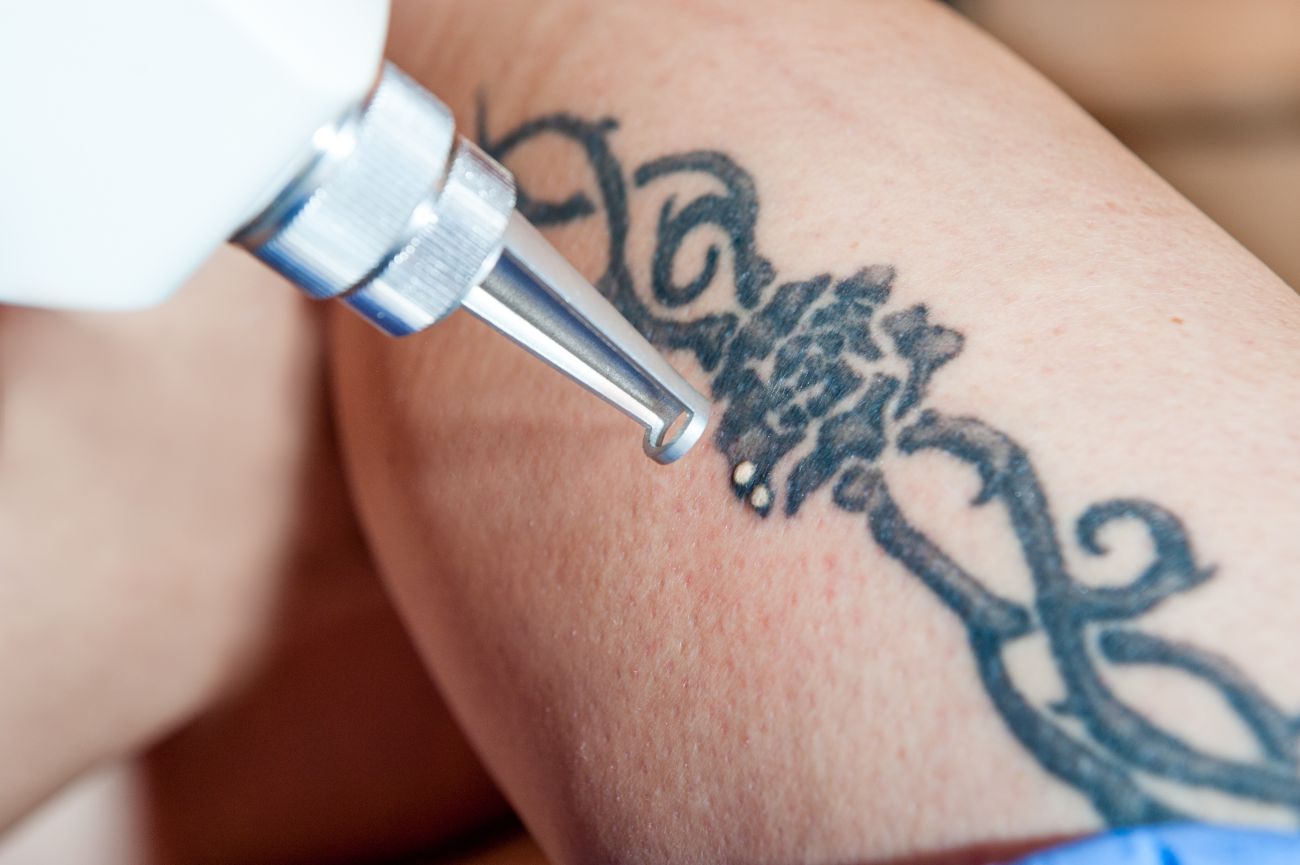Many people used to hide their body art from employers and older family members, but today tattoos seem as commonplace as jewelry. Nearly one-in-three Americans get inked at some point during their lives. Sadly, about a quarter of those individuals later say they regret their decision. Fortunately for them, most tattoos can be removed thanks to laser technology. If you’re considering laser tattoo removal, read this guide first so that you understand the costs, risks and benefits of the procedure.
Why Consider Laser Tattoo Removal?
Parting ways with a tattoo can be an emotional experience. Like getting married, getting inked is usually considered a lifelong commitment; no one does it with the intention of changing their mind later on down the road. However, people change as they get older, and their tastes change with them. They change careers, they change faiths, they change political affiliations, and they change romantic partners. Some people feel a sense of loss, but others view tattoo removal as a liberating experience, especially if their tattoo is associated with unpleasant memories.
Nonetheless, because laser tattoo removal is considered a medical procedure, it shouldn’t be undertaken lightly. You should carefully weigh the risks and benefits to your physical and emotional health.
How Does It Work?
Laser tattoo removal entails using a concentrated beam of light to break up colored pigment. Since black absorbs all laser wavelengths, it is the easiest color to remove, but getting rid of other colors requires the use of specific types of lasers. Tattoo removal should only be attempted by professionals who are trained to use the equipment such as a licensed dermatologist or a cosmetic surgeon.
What to Expect from the Surgery
After scheduling an appointment with a trained technician, your first visit will begin with a consultation to discuss your goals and the removal process. In many cases, complete color removal is impossible. Darker colors tend to respond better to laser treatments, but brighter colors may remain noticeable. Either way, you will likely need multiple treatments for optimal results. The age, size, and colors of your tattoo will factor into how many sessions are necessary as will your skin color and the depth of the tattoo pigment.
During laser treatments, you will be given special glasses to wear to protect your eyes from the intense light beam. The technician will first test the laser on a small patch of skin to help choose the best energy setting. The laser sends pulses of light underneath the top layers of your skin so that it only affects the tattoo pigment. The amount of time needed of each session various widely based on the size of the tattoo. At the end of each treatment, the colors should appear lighter.
Laser treatment can be painful, but it’s no more uncomfortable than getting inked. Many patients don’t receive anesthesia, but topical anesthesia may be recommended for tattoos on particularly tender parts of the body.
Applying an ice pack immediately after treatment can alleviate discomfort. Your technician will also likely cover the area with an antibiotic ointment and a bandage to protect your skin. In the following few weeks, you should cover the area with sunblock before going outside.
You should be able to return to work and resume your normal activities immediately after treatment but expect the affected area to sting for up to two weeks after the first session. You’ll need to wait for the skin to heal completely each time between sessions, which can take six weeks or longer. Patients report healing faster after each successive treatment.
Potential Side Effects
Laser treatments are generally safer than alternative removal methods like excision, dermabrasion, and salabrasion. Nonetheless, the treatment site is vulnerable to infection, and you may have a permanent scar. Hypopigmentation and hyperpigmentation are also possible, which means that the treated area might appear lighter or darker than surrounding skin. Some tattoos, especially cosmetic ones such as lip liner, eyeliner or eyebrows might become darker after initial treatments, but they often lighten with future treatments.
What Costs to Expect
Most insurance plans don’t cover tattoo removal since it’s usually considered a cosmetic procedure. Every technician has their own payment policies, but many ask for full payment upfront for each session. During your initial consultation, make sure that you understand all the costs, and ask for charges in writing before beginning treatment.
Prices for laser tattoo removal vary widely by region. Some surgeons charge a certain amount per square inch while others might ask for a flat fee. You should obtain quotes from a few places to make sure you’re getting a fair price before you settle on a surgeon.
How to Find the Right Technician
Once you’ve decided that laser tattoo removal is right for you, the next step is to seek out a reputable dermatologist or cosmetic surgeon. Ask your primary care physician or your tattoo artist for recommendations but be sure to do your own research as well to make sure that the technician you choose is legitimate. Experienced tattoo removal technicians should gladly share before-and-after photos of their past patients. Getting laser tattoo removal is a large financial and time commitment, so take your time in selecting a surgeon that you trust and are comfortable with.
